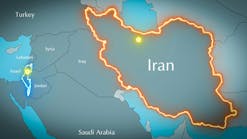IEA keeps its 2020 oil demand growth forecast
Global oil supply tumbled 780,000 b/d in December 2019 as biofuels production declined seasonally and Saudi Arabia reduced output, according to the latest Oil Market Report from the International Energy Agency (IEA).
At 100.7 million b/d, the global total supply was down 1.3 million b/d on a year ago, with OPEC supply 2.4 million b/d lower.
Steeper OPEC+ cuts take effect this month. The OPEC+ countries need to cut output by about 300,000 b/d in January to comply with their new agreement. Meanwhile, non-OPEC production growth is forecast to accelerate from 2 million b/d in 2019 to 2.1 million b/d in 2020 with stronger growth in the first half of the year.
With stronger non-OPEC oil supply growth, the call on OPEC crude falls to 28.5 million b/d during the first half of 2020 compared with December production of 29.44 million b/d.
Global oil demand rose by 955,000 b/d y-o-y to 101.1 million b/d in October and for the 2019 fourth quarter, it is estimated to have grown by 1.9 million b/d versus a low 2018 fourth quarter level.
“We see continued strong momentum in non-OECD countries with China and India demand growing 800,000 b/d and 500,000 b/d respectively in November. US demand is flat in 2019,” IEA said.
IEA’s global demand growth forecasts for 2019 and 2020 remain unchanged at 1 million b/d and 1.2 million b/d, respectively. Oil demand growth in 2020 is supported partly by prices remaining relatively subdued, higher global GDP growth than last year, and by progress in settling trade disputes.
For fourth-quarter 2019 and the year as a whole, global refinery runs are estimated to have declined by 200,000 b/d y-o-y. Refining margins continued falling in December due to higher crude prices, and exceptions were largely due to widening sour crude differentials.
Global refining intake in 2020 is forecast to increase by 1.1 million b/d, supported by a recovery in refined product demand, estimated to grow by 800,000 b/d.
OECD industry stocks fell 2.9 million bbl in November to 2,912 million bbl. They were 8.9 million bbl above the 5-year average and covered 60.6 days, 0.6 days below the average.
Preliminary data for December showed inventories building in the US and Europe and falling in Japan. Short-term floating storage of crude oil increased 4.5 million bbl in December to 66.5 million bbl. The number of Iranian VLCCs used for floating storage increased by two to 28.
ICE Brent surged $4/bbl following US/Iran clashes in Iraq in early January, but prices have retreated below $65/bbl as supplies were not interrupted. As the new IMO rules are introduced, cracks for compliant VLSFO made large gains and HSFO in Singapore drew some support on demand from ships fitted with scrubbers. Freight rates strengthened due to the IMO transition to more expensive shipping fuels and escalating tensions in the Middle East Gulf.
Iraq
According to IEA, recent events have shown that Iraq is a potentially vulnerable supplier, just as its strategic importance has grown.
In recent years, Iraq’s production and export capacity have expanded fast: in 2010 Iraq exported 2 million b/d and now the figure is 4 million b/d.
“Iraq’s rising capacity has been very welcome as sanctions have reduced Iran’s exports to only 300,000 b/d and Venezuela’s production has collapsed. Today, both China and India receive about 1 million b/d of oil from Iraq and another 1 million b/d moves to various European countries. In India’s case, around 20% of its crude imports come from Iraq. Amongst Iraq’s other customers is the US,” IEA said.
Data from the US Energy Information Administration show that in January-October 2019, the US imported 337,000 b/d from Iraq and just below 1 million b/d from the Middle East Gulf as a whole.
“In the medium-term, heightened security concerns might make it more difficult for Iraq to build production capacity. In turn, this could make it more difficult to ensure there is sufficient spare production capacity to meet rising global demand in the second half of this decade,” IEA said.
